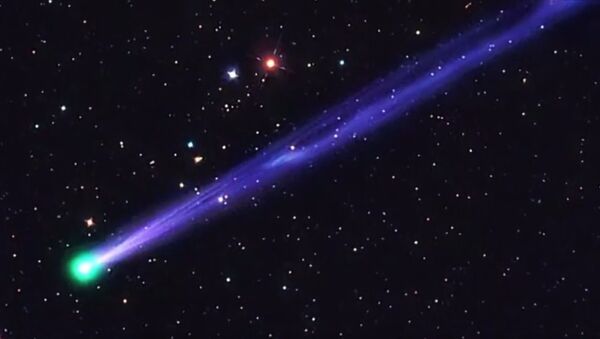Comet 45P/Honda-Mrkos-Pajdušáková, named after the three astronomers from Japan, the Czech Republic and Slovakia who discovered it independently, is an old pal for the researchers. Discovered in 1948, it has been under observation every time it returned to Earth's orbit approximately every five years. But everything changed in late 2016 and early 2017, when scientists decided to study the comet's atmospheric content by looking at chemical fingerprints in the infrared part of the spectrum, according to a Phys.org report.
The comet contained so little carbon monoxide that scientists officially called it depleted. Carbon monoxide evaporates from the nucleus into the comet's thin atmosphere and is subsequently lost into space when the celestial body gets heated by the sun. For a comet that's made many passes by a star, the loss of carbon monoxide is hardly something unusual.
However, your average comet also loses its methane, also contained within the comet's ice, along with carbon monoxide — so a comet low on carbon monoxide should also be low on methane, too.
But that was not the case with 45P. On the contrary, the researchers discovered it was quite rich in methane — something never observed before.
Why would that happen and what does it mean? One hypothesis proposed by the researchers says that carbon monoxide reacted with hydrogen in comet's icy core, resulting in the formation of all the abundant methane found in its atmosphere.
Methane, one of the most basic organic substances, is instrumental in the emergence of simple organic molecules such as sugars and amino acids. Some researchers believe it was comets that "delivered the biochemical spark that began life on Earth," according to Newsline.
"This research is groundbreaking," said Faith Vilas, solar and planetary research program director at the National Science Foundation. "This broadens our knowledge of the mix of molecular species coexisting in the nuclei of Jovian-family comets, and the differences that exist after many trips around the sun."
The research team now aims to determine how common such comets actually are. They have already gathered data from similar two short-period comets, 2P/Encke and 41P/Tuttle-Giacobini-Kresak, and plan to watch two others, 21P/Giacobini-Zinner and 46P/Wirtanen, Phys.org reports.
Could this help prove scientists' long-held hunch that life on Earth began after an early comet impact?




